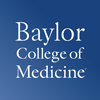Publications
Export 1569 results:
Author Title [ Year ]
] Filters: First Letter Of Last Name is C [Clear All Filters]
Association Between Absolute Neutrophil Count and Variation at TCIRG1: The NHLBI Exome Sequencing Project. Genet Epidemiol 40, 470-4 (2016).
Association of MTOR Mutations With Developmental Brain Disorders, Including Megalencephaly, Focal Cortical Dysplasia, and Pigmentary Mosaicism. JAMA Neurol 73, 836-845 (2016).
Association of MTOR Mutations With Developmental Brain Disorders, Including Megalencephaly, Focal Cortical Dysplasia, and Pigmentary Mosaicism. JAMA Neurol 73, 836-845 (2016).
Association of MTOR Mutations With Developmental Brain Disorders, Including Megalencephaly, Focal Cortical Dysplasia, and Pigmentary Mosaicism. JAMA Neurol 73, 836-845 (2016).
Association of MTOR Mutations With Developmental Brain Disorders, Including Megalencephaly, Focal Cortical Dysplasia, and Pigmentary Mosaicism. JAMA Neurol 73, 836-845 (2016).
Ataxia-Pancytopenia Syndrome Is Caused by Missense Mutations in SAMD9L. Am J Hum Genet 98, 1146-1158 (2016).
Ataxia-Pancytopenia Syndrome Is Caused by Missense Mutations in SAMD9L. Am J Hum Genet 98, 1146-1158 (2016).
Biallelic Mutations in Citron Kinase Link Mitotic Cytokinesis to Human Primary Microcephaly. Am J Hum Genet 99, 501-10 (2016).
Biallelic Mutations in Citron Kinase Link Mitotic Cytokinesis to Human Primary Microcephaly. Am J Hum Genet 99, 501-10 (2016).
Bi-allelic Mutations in PKD1L1 Are Associated with Laterality Defects in Humans. Am J Hum Genet 99, 886-893 (2016).
Biallelic Mutations in TMTC3, Encoding a Transmembrane and TPR-Containing Protein, Lead to Cobblestone Lissencephaly. Am J Hum Genet 99, 1181-1189 (2016).
Biallelic Mutations in TMTC3, Encoding a Transmembrane and TPR-Containing Protein, Lead to Cobblestone Lissencephaly. Am J Hum Genet 99, 1181-1189 (2016).
Biallelic Mutations in TMTC3, Encoding a Transmembrane and TPR-Containing Protein, Lead to Cobblestone Lissencephaly. Am J Hum Genet 99, 1181-1189 (2016).
Biallelic Mutations in UNC80 Cause Persistent Hypotonia, Encephalopathy, Growth Retardation, and Severe Intellectual Disability. Am J Hum Genet 98, 202-9 (2016).
Biallelic Mutations in UNC80 Cause Persistent Hypotonia, Encephalopathy, Growth Retardation, and Severe Intellectual Disability. Am J Hum Genet 98, 202-9 (2016).
Biallelic Mutations in UNC80 Cause Persistent Hypotonia, Encephalopathy, Growth Retardation, and Severe Intellectual Disability. Am J Hum Genet 98, 202-9 (2016).
Characterization of Greater Middle Eastern genetic variation for enhanced disease gene discovery. Nat Genet 48, 1071-6 (2016).
Characterization of Greater Middle Eastern genetic variation for enhanced disease gene discovery. Nat Genet 48, 1071-6 (2016).
Chimeric transcripts resulting from complex duplications in chromosome Xq28. Hum Genet 135, 253-6 (2016).
The ciliopathy-associated CPLANE proteins direct basal body recruitment of intraflagellar transport machinery. Nat Genet 48, 648-56 (2016).
The ciliopathy-associated CPLANE proteins direct basal body recruitment of intraflagellar transport machinery. Nat Genet 48, 648-56 (2016).
The ciliopathy-associated CPLANE proteins direct basal body recruitment of intraflagellar transport machinery. Nat Genet 48, 648-56 (2016).
Comparison of Short-Wavelength Reduced-Illuminance and Conventional Autofluorescence Imaging in Stargardt Macular Dystrophy. Am J Ophthalmol 168, 269-278 (2016).
Copy-Number Variation Contributes to the Mutational Load of Bardet-Biedl Syndrome. Am J Hum Genet 99, 318-36 (2016).
Cutaneous skeletal hypophosphatemia syndrome (CSHS) is a multilineage somatic mosaic RASopathy. J Am Acad Dermatol 75, 420-7 (2016).
Cutaneous skeletal hypophosphatemia syndrome (CSHS) is a multilineage somatic mosaic RASopathy. J Am Acad Dermatol 75, 420-7 (2016).
De novo missense variants in PPP1CB are associated with intellectual disability and congenital heart disease. Hum Genet 135, 1399-1409 (2016).
De novo missense variants in PPP1CB are associated with intellectual disability and congenital heart disease. Hum Genet 135, 1399-1409 (2016).
De Novo Mutations in SON Disrupt RNA Splicing of Genes Essential for Brain Development and Metabolism, Causing an Intellectual-Disability Syndrome. Am J Hum Genet 99, 711-719 (2016).
The dentin phosphoprotein repeat region and inherited defects of dentin. Mol Genet Genomic Med 4, 28-38 (2016).
Destabilization of the IFT-B cilia core complex due to mutations in IFT81 causes a Spectrum of Short-Rib Polydactyly Syndrome. Sci Rep 6, 34232 (2016).
Digenic mutations of human paralogs in Dent's disease type 2 associated with Chiari I malformation. Hum Genome Var 3, 16042 (2016).
Dominant de novo DSP mutations cause erythrokeratodermia-cardiomyopathy syndrome. Hum Mol Genet 25, 348-57 (2016).
Dominant de novo DSP mutations cause erythrokeratodermia-cardiomyopathy syndrome. Hum Mol Genet 25, 348-57 (2016).
Dominant de novo DSP mutations cause erythrokeratodermia-cardiomyopathy syndrome. Hum Mol Genet 25, 348-57 (2016).
DVL3 Alleles Resulting in a -1 Frameshift of the Last Exon Mediate Autosomal-Dominant Robinow Syndrome. Am J Hum Genet 98, 553-561 (2016).
Exome Sequencing Analysis in Severe, Early-Onset Chronic Obstructive Pulmonary Disease. Am J Respir Crit Care Med 193, 1353-63 (2016).
Exome Sequencing Analysis in Severe, Early-Onset Chronic Obstructive Pulmonary Disease. Am J Respir Crit Care Med 193, 1353-63 (2016).
Exome Sequencing Analysis in Severe, Early-Onset Chronic Obstructive Pulmonary Disease. Am J Respir Crit Care Med 193, 1353-63 (2016).
Exome Sequencing Analysis in Severe, Early-Onset Chronic Obstructive Pulmonary Disease. Am J Respir Crit Care Med 193, 1353-63 (2016).
Exome Sequencing Analysis in Severe, Early-Onset Chronic Obstructive Pulmonary Disease. Am J Respir Crit Care Med 193, 1353-63 (2016).
Exome sequencing identifies a de novo frameshift mutation in the imprinted gene ZDBF2 in a sporadic patient with Nasopalpebral Lipoma-coloboma syndrome. Am J Med Genet A 170, 1934-7 (2016).
Exome sequencing in mostly consanguineous Arab families with neurologic disease provides a high potential molecular diagnosis rate. BMC Med Genomics 9, 42 (2016).
Exome sequencing in mostly consanguineous Arab families with neurologic disease provides a high potential molecular diagnosis rate. BMC Med Genomics 9, 42 (2016).
Family Based Whole Exome Sequencing Reveals the Multifaceted Role of Notch Signaling in Congenital Heart Disease. PLoS Genet 12, e1006335 (2016).
Family Based Whole Exome Sequencing Reveals the Multifaceted Role of Notch Signaling in Congenital Heart Disease. PLoS Genet 12, e1006335 (2016).
Family-Based Rare Variant Association Analysis: A Fast and Efficient Method of Multivariate Phenotype Association Analysis. Genet Epidemiol 40, 502-11 (2016).
FARVATX: Family-Based Rare Variant Association Test for X-Linked Genes. Genet Epidemiol 40, 475-85 (2016).





